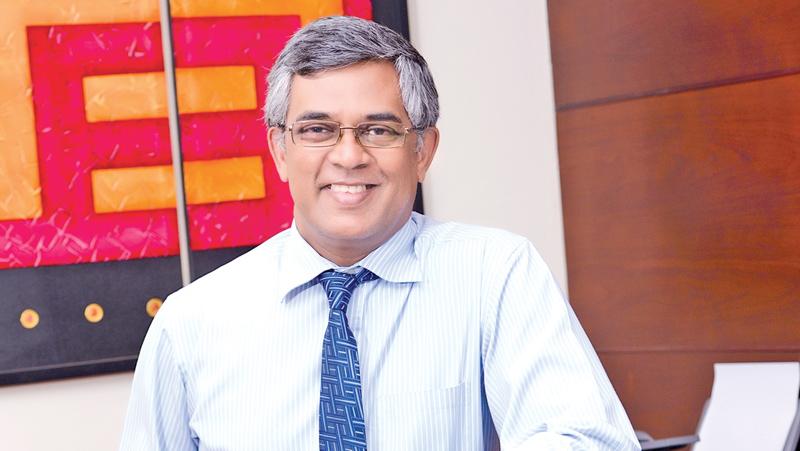
The government has set an FDI target of US$ 2.5 billion for 2018, and is attempting to reach an annual FDI target of US$ 5 billion by 2020.
Foreign Direct Investments (FDIs) to Sri Lanka reached an all-time high of US $ 1.9 billion in 2017. However, economic analysts say, the government needs to consolidate on the investor confidence to retain the high level of FDI inflow and create a conducive environment to attract more in the future.
Candor Group Director Ravi Abeysuriya said, there is a need for robust policy initiatives to improve the country’s investment climate to attract and retain FDI for Sri Lanka.
“The policies adopted by Sri Lanka have to be stronger to maintain the country’s attractiveness as a destination for FDI. Therefore, it is important to create an enabling environment for FDIs. Real estate is an important asset class to include in an investment portfolio to benefit from diversification and to generate wealth,” he said.
 Foreign Direct Investments (FDIs) to Sri Lanka reached an all-time high of US $ 1.9 billion in 2017, Central Bank data released last week indicated. This was an over four fold increase compared to the US $ 450 million in FDI inflows recorded in 2016. According to the Board of Investment (BOI), a majority of the investments in 2017 were from existing foreign investors re-investing profits or injecting more capital into the country.
Foreign Direct Investments (FDIs) to Sri Lanka reached an all-time high of US $ 1.9 billion in 2017, Central Bank data released last week indicated. This was an over four fold increase compared to the US $ 450 million in FDI inflows recorded in 2016. According to the Board of Investment (BOI), a majority of the investments in 2017 were from existing foreign investors re-investing profits or injecting more capital into the country.
However, nearly US$ 300 million came from the first tranche of the Hambantota Port lease to China by the government last December.
The BOI said that the highest FDI inflows came from China, followed by Hong Kong, India and Singapore. The FDIs in 2017 broke the previous high of US$ 1.7 billion set in 2014, when large inflows came in from China for the mega project, the Colombo Port City, and the Colombo International Container Terminal.
A year earlier in 2013, US$ 1.4 billion in FDIs were recorded, maintaining an upward trend in investments following the end of the civil war in 2009.
The dip in FDis to US$ 970 million in 2015 and US$ 450 million in 2016 resulted from political and policy uncertainty arising from a change in government, and the inability of the new government to maintain policy consistency.
However, 2016 and 2017 saw the government implement better fiscal and monetary policies, which along with an International Monetary Fund sponsored reform program, saw foreign investor confidence increase in 2017.
The government has further pledged to ease the doing business environment in Sri Lanka, and has taken steps towards its promise, with the implementation of a simpler tax law, and making the registration of a company, a one-day affair.
More action is being taken by eight task forces assigned by the government to improve doing business, in order to attract FDIs, particularly to export industries, in order to take advantage of Sri Lanka’s geographic location and trade agreements.
The government is also viewing FDIs and boosting exports as the more sustainable solution to solve Sri Lanka’s balance of payment woes.
The higher FDIs and an improved export performance had contributed to Sri Lanka’s foreign reserves increasing to US$ 8 billion at the end of 2017 compared to US$ 6 billion 12 months earlier.
The government has set an FDI target of US$ 2.5 billion for 2018, and is attempting to reach an annual FDI target of US$ 5 billion by 2020. Although the government has recognized this need, the political will, commitment and the speed at which policies are being implemented leave much to be desired. Most importantly, if Sri Lanka is to improve its investment climate, changing the mindset of the public is essential.
Sri Lanka has missed many opportunities to transform itself into a developed nation. As evidenced by realized inflows, Sri Lanka’s attractiveness for FDI has remained low in spite of continued efforts to facilitate such investments.
The weak investment climate in Sri Lanka can be attributed to a range of factors including policy uncertainty, institutional weaknesses such as corruption and weak regulations, and faltering infrastructure.
However, Sri Lanka is attracting lower volumes of FDI as a percentage of GDP, than its peer economies - only 1.1% of GDP.
=There exists a clear opportunity to attract more FDI, an opportunity that Sri Lanka cannot miss, he said.
Most of the FDI to Sri Lanka in the last ten years comprised investment into the tourism and real estate sectors. The real estate sector is among one of the key drivers of the economy and constitutes an important contributor to national GDP, a source of revenue generation for the government and a large employment provider.
Limited fiscal space and tax-based funding by the government are not adequate to meet the pressing needs for infrastructure. It is important for the government to attract private investment for the provisioning of infrastructure through Public Private Partnerships (PPPs).
It is essential that policies be implemented swiftly with consistency in order to attract higher levels of FDI to the country, particularly in the backdrop of relatively higher FDI inflows to emerging market economies such as India and Vietnam.
The government could make infrastructure an attractive value proposition for FDI to flow.
Policy changes have helped in attracting more FDI to India as the country is ranked fourth in developing Asia for FDI inflows. The construction development sector in India has received FDI equity inflows to the tune of USD24.3 billion in the period April 2000-March 2017.
